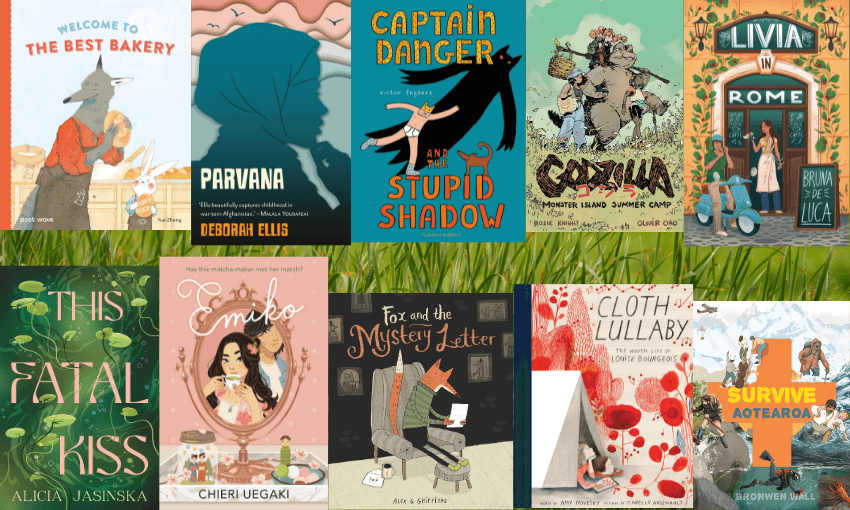Louisa Kasza reviews the full-on memoir by former beauty editor and fulltime drug addict Cat Marnell.
Charming, strung-out ex-beauty editor Cat Marnell represents many things traditionally despised about that walking thinkpiece, the millennial. Born into privilege, Marnell recognises her own potential as a writer, preferably for Condé Nast magazines, and merrily sets forth into a life of glamour and label-bashing, addiction and loneliness – all the while having the gall to not apologise for her behaviour or choices, then benefitting in the end from the aforementioned privilege, talent and addiction by cashing in and publishing this very memoir.
How to Murder Your Life tells that story in satisfying, bean-spilling detail. Blessed from birth with the very questionable gift of having two mental health professionals as parents, both of whom embody the “heal thyself” dictum to a shocking degree, Marnell fails to please as an unfocused (except on creating teen magazines), apparently hyperactive child. Desperate, Marnell eventually diagnoses herself with ADHD in her teens after trying a classmate’s stash of that study-drug for the ages, Ritalin. Finally armed with laser focus and the social confidence that comes with having a prescription for party drugs, she moves to New York and unsteadily climbs the ranks at Condé Nast while investigating the depths of New York’s club scene.
All the while, Marnell is leaving behind Ritalin (which contains methylphenidate) for Adderall (a scarier mixture of amphetamine salts). She’s entering the heady daze of both full-blown addiction and New York in the mid-2000s, that hazy, almost-forgotten time (before Girls and the rise of Brooklyn) of Alexander McQueen skull-print scarves, Gossip Girl, the Strokes and the Libertines, while being variously supported, exploited and fired by a series of bosses, friends and boyfriends.
The thing is, Marnell can write, and you can see why her editors, whatever their reasoning or level of care, kept her around. She also cannot connect, or sustain a connection, so you can also see why, as a lonely and vulnerable workaholic addict, she is eventually abandoned by those who try to help her, and is preyed upon by scumbags.
But things get better, and no addiction memoir is complete without a thoughtful, considered afterword written from the other side of successful rehabilitation, preferably with a humble aside to spirituality. While Marnell does go through these motions, she’s quick to admit that she’s still taking Adderall. There are no tidy bows wrapping up Marnell’s story. Frankly, the book leaves the reader more concerned for her than ever, having become invested in her as a human being.
There’s something a little retro about the concept of the tell-all memoir, harkening back as it does to the golden age of the celebremoir, the New York Times bestseller list and the Oprah appearance. But then there’s something retro about Marnell herself: a writer who carved a niche for herself in the frontier days of blogging (itself now swiftly becoming an obsolete medium), yet never lost her passion for print magazines or indeed some disdain for online writing, and who eventually completed the circle from print to online back to the uber-print medium, the book. Despite all evidence to the contrary, millennials do remember a time before life was lived online, and their nostalgia for the old and fear of the new is sometimes just as strong if not stronger than in any baby boomer. They just don’t have a choice but to engage with a changing media environment.
And that’s where a further tragedy lies; Marnell may have missed her moment. You have to understand that in the mid-2000s, for a small but growing segment on the internet, Cat Marnell was a big deal. She was then, truly (as the book’s cover would have it) an enfant terrible — a voice billed as fresh, funny and radically honest in a way that she was one of the first to do and which swiftly became first the norm, and then slightly played out.
Hate random exclamation marks?! You’ll hate this! Hate… young women? You’ll hate it! There’s also a lot of comic-book-style yelling, for some reason. But if you’re prepared to suspend judgement not just about addiction and terrible decisions arising from it, but also about what it means to be young and trying to find your niche in a world where the rules are constantly changing, you’ll be pleasantly surprised at the emotional acuity, self-awareness and self-deprecating humour that Marnell brings to her memoir.
How to Murder Your Life by Cat Marnell (Penguin, $40) is available at Unity Books.



